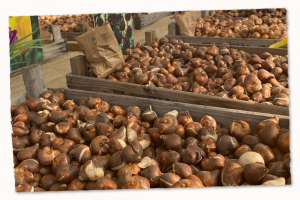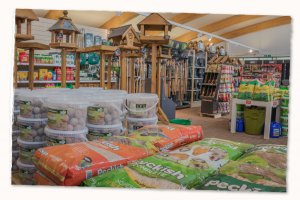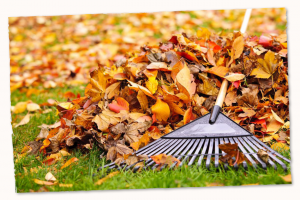 Collecting fallen leaves for compost becomes one of the main activities in the garden at this time of year, but remember to set aside any fine days for autumn digging so that forthcoming winter frosts can continue to break down the dug-over soil, leaving it in good condition for spring planting.
Collecting fallen leaves for compost becomes one of the main activities in the garden at this time of year, but remember to set aside any fine days for autumn digging so that forthcoming winter frosts can continue to break down the dug-over soil, leaving it in good condition for spring planting.
If time is limited in the garden this month, here are Lawrence’s top tips:
1) Clear leaves from lawn and compost them and thoroughly rake with a wire rake or scarifier.
2) Feed lawn with an autumn lawn food.
3) Cut back perennials that have died down completely.
4) Plant Spring-flowering bulbs; it’s not too late!
5) Put a layer of mulch on beds such as Bloomin Amazing 3in 1 Soil Improver to improve the soil.
6) Plant up winter tubs and baskets.
7) Cut back stems that have finished fruiting on summer fruiting raspberries and blackberries.
8) Pick and store apples and pears.
9) Plant hardy shrubs; trees and herbaceous perennials.
10) October is a great time to lay turf.
If you have a little more time to spare…
BEDS AND BORDERS
Continue to sow hardy annuals outside. They will over-winter nicely and produce a stunning display next year.


Plant new fruit trees and bushes in October while the soil is moist and relatively warm, and make sure you control weeds and grasses around established trees so that winter rains can penetrate the soil.
Lift any summer flowering bulbs or tubers (like Dahlia tubers and Gladiolus corms) that are not hardy.
Most shrubs will benefit by being planted in the autumn as it gives them a good six months of cool weather and damp soil to become firmly established.
GARDEN STRUCTURES
Although not everyone’s idea of fun, having a good clean of your patio and paths now will make light work of it for spring next year. Using a pressure washer will not only help to get rid of the dirt and grime but also the moss or weeds growing in between your paving slabs.
It’s a good time to choose an outdoor storage solution for your garden as it will not only neaten it but also help protect your treasured garden possessions from the British winter.
WILDLIFE
Tender pond plants, such as water hyacinths, may need some attention now. Remove any drying foliage and place the plants in trays of deep mud or damp sand and keep them in a frost-free environment, such as a greenhouse.
Don’t forget to feed garden birds to help them through the winter. We have an extensive range of birdcare products available in-store and online.

EDIBLE PLANTS
Start winter digging in the vegetable plot, especially if your soil is heavy clay. Add manure or compost and leave it rough, allowing the winter frosts to break it down further.
Lift and divide rhubarb if the plant has become congested.
Apples and Pears which are ripe should be picked and handled carefully prior to storage in a cool, airy position. When picking fruit from trees it might be worth investing in a fruit picker to make the task a little easier.
Plant strawberries during the middle of the month for cropping next summer.


To help keep your lawn in tip-top shape, make sure you rake up leaves regularly and ‘save your back’ whilst collecting them using some long-handled leaf grabs. This will help to prevent waterlogging of your lawn, a common cause of moss, and stop your grass from going yellow due to lack of light.
When you have collected your fallen leaves, pack them into a dustbin liner with a few small holes in the bottom, before sprinkling with water and sealing the bags. Place the bags in an inconspicuous corner of the garden for about a year, and then you’ll have heaps of wonderful leaf mould which will add bulk and organic matter to the soil, improving its structure.
If the weather is mild, you can continue to mow your lawn right up until November. Using Miracle-Gro Autumn Lawn Care from September to mid-November will help to stimulate root growth, kill moss and toughen up your grass to see it through the winter.
IN THE GREENHOUSE
Now that the first frosts are upon us, heating may be required at night. To make the most of the winter sun, give the glass a good clean both inside and out and remove any greenhouse shading. Keep well ventilated in order to keep up air movement and alleviate dampness.
(In season this month: Apples, Beetroot, Broccoli, Figs, Leeks, Pears, Potatoes, Squash, Swede, Pumpkins, Wild Mushrooms)
LOOK OUT IN STORE FOR:
Our fantastic range of spring flowering bulbs. Whether you love Tulips, Daffodils, Hyacinths or Iris we will have what you need, along with a heap of inspiration and ideas.




